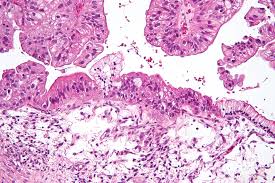Introduction to ECG
What is an ECG?
An Electrocardiogram (ECG) is a vital tool in modern medicine, offering a window into the heart’s electrical activities. This non-invasive procedure helps in diagnosing various heart-related conditions.

The Importance of Electrocardiograms
ECGs play a crucial role in monitoring heart health, aiding in the early detection and treatment of heart diseases. They are essential in routine check-ups and emergency situations alike.
The Fundamentals of ECG
Defining ECG
Electrocardiogram Explained
At its core, an ECG is a representation of the heart’s electrical activity. It provides critical insights into the heart’s rhythm and condition.
Role in Heart Health Monitoring
Regular ECGs can detect abnormalities in heart rhythms, helping in preventive care and in the management of existing heart conditions.
How ECG Works
Capturing Heart’s Electrical Activity
The ECG machine captures the electrical signals of the heart through electrodes placed on the patient’s body, translating these signals into a waveform.
Technology Behind ECG
Advanced technology in ECG machines ensures accurate readings, which are crucial for correct diagnosis and treatment planning.
Types of ECG Tests
Overview of ECG Variants
ECGs come in various types, each serving a specific purpose. The most common types are resting, stress, and ambulatory ECGs.
Resting ECG
Performed while the patient is at rest, this test captures the heart’s baseline electrical activity.
Stress ECG
Conducted during exercise, stress ECGs assess how the heart performs under physical stress.
Ambulatory ECG
This type involves continuous monitoring over a period, usually 24-48 hours, to capture irregular heart rhythms that might not appear in a resting ECG.
Decoding the ECG Readings
Understanding ECG Components
P Wave, QRS Complex, T Wave
Each component of an ECG waveform provides specific information about heart function. The P wave indicates atrial contraction, the QRS complex shows ventricular contraction, and the T wave represents ventricular recovery.
Interpreting ECG Results
Reading and Analyzing ECG Charts
Interpreting ECG results requires understanding the normal ranges and patterns. Variations can indicate different cardiac conditions.
Common Patterns and Their Meanings
Certain patterns in ECG can be indicative of issues like arrhythmias, ischemia, or myocardial infarction.
ECG in Diagnosing Heart Conditions
Role of ECG in Heart Health
Identifying Heart Rhythms and Abnormalities
ECGs are instrumental in identifying irregular heart rhythms and diagnosing conditions like atrial fibrillation or ventricular tachycardia.
Detecting Myocardial Infarction
ECGs are critical in the early detection of heart attacks, helping guide timely interventions.
ECG for Heart Structure Analysis
Assessing Chamber Size and Wall Thickness
ECGs can indirectly provide information about the heart’s size and wall thickness, crucial in diagnosing conditions like hypertrophy.
Evaluating Pacemaker Performance
For patients with pacemakers, ECGs are used to monitor device performance and heart response.
Advanced Applications of ECG
Specialized ECG Procedures
Cardiovascular Stress Testing
Stress testing with ECGs helps assess heart function under exertion, useful in diagnosing coronary artery disease.
Clinical Electrophysiology
This specialized form of ECG testing is used in diagnosing complex arrhythmias and planning treatments like ablation therapy.
Continuous ECG Monitoring
Holter Monitors and Biotelemetry
Holter monitors provide extended ECG recording, while biotelemetry allows real-time monitoring of cardiac activity.
Inpatient and Outpatient Monitoring Scenarios
Continuous monitoring is crucial in both hospital settings and for outpatients with heart conditions.
Conclusion: The Significance of ECG in Modern Medicine
Recap of Key Points
This article explored the essential aspects of ECG, from its basic functioning to its role in diagnosing and monitoring heart conditions.
ECG’s Role in Comprehensive Heart Care
The significance of ECG in modern medicine is undeniable, providing critical data for effective heart care.
Read More :- Knows Kit






